Table of Contents
Restaurant delivery management software is a multifaceted solution designed to optimize a food service establishment’s delivery operations. This innovative platform orchestrates the entire delivery process, from order intake to dispatch and tracking. By leveraging such a system, restaurants can seamlessly integrate various business components, including inventory management, order processing, routing, and customer interactions. The streamlined approach afforded by this technology elevates the efficiency of delivery services, ensuring a faster, more reliable experience for both the restaurant and the customer.
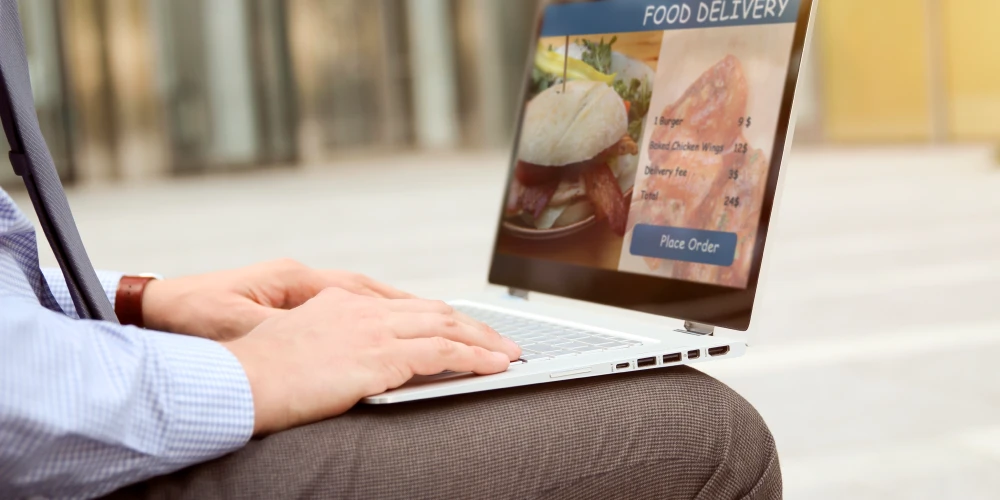
Top 05 Restaurant Delivery Management Software
NetworkON
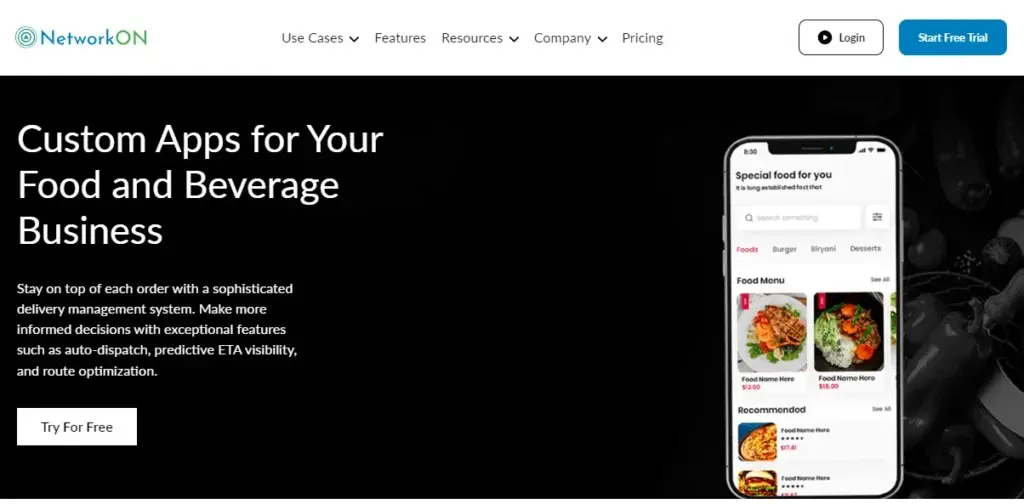
NetworkOn offers comprehensive restaurant delivery management software designed to streamline operations and enhance efficiency for food service businesses. Their platform integrates advanced logistics with user-friendly interfaces, empowering restaurants to optimize delivery routes, manage orders seamlessly, and provide exceptional customer experiences.
Pros:
Comprehensive Management: Enables restaurants to handle orders, delivery assignments, and customer communications from a single platform.
Integration Capabilities: Seamless integration with existing POS systems and third-party delivery services.
Analytics and Insights: Provides detailed analytics to optimize delivery routes and improve operational efficiency.
Cons:
Complexity: Training may be required to utilize all features fully.
Cost: Pricing structure could be prohibitive for smaller businesses.
Vromo
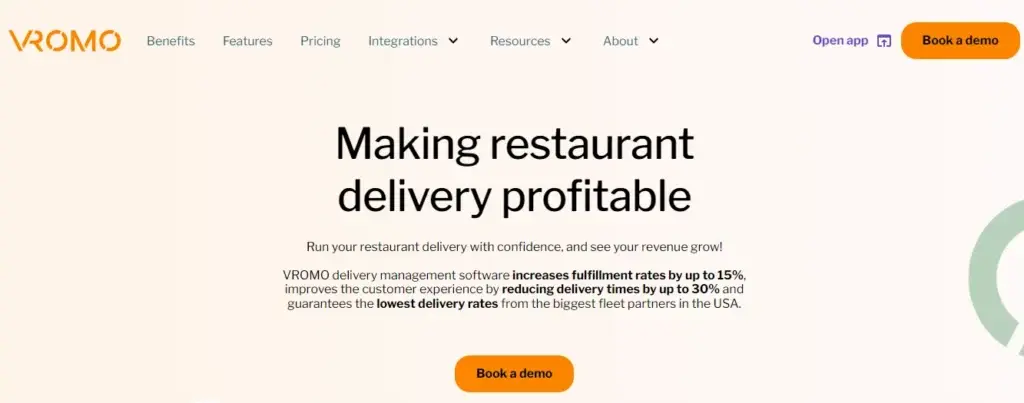
Vromo specializes in innovative food delivery management solutions for restaurants and delivery businesses. Their software enables efficient order dispatching, real-time tracking, and route optimization, ensuring timely deliveries and improved operational productivity. Vromo’s intuitive platform supports restaurants in scaling their delivery operations effectively.
Pros:
User-Friendly Interface: Intuitive design simplifies order management and tracking.
Real-Time Updates: Keeps customers and drivers informed about order status.
Customizable Solutions: Tailored features for different restaurant sizes and operational needs.
Cons:
Scalability: Limited scalability options for rapidly growing businesses.
Customer Support: Some users report issues with customer support responsiveness.
Onro
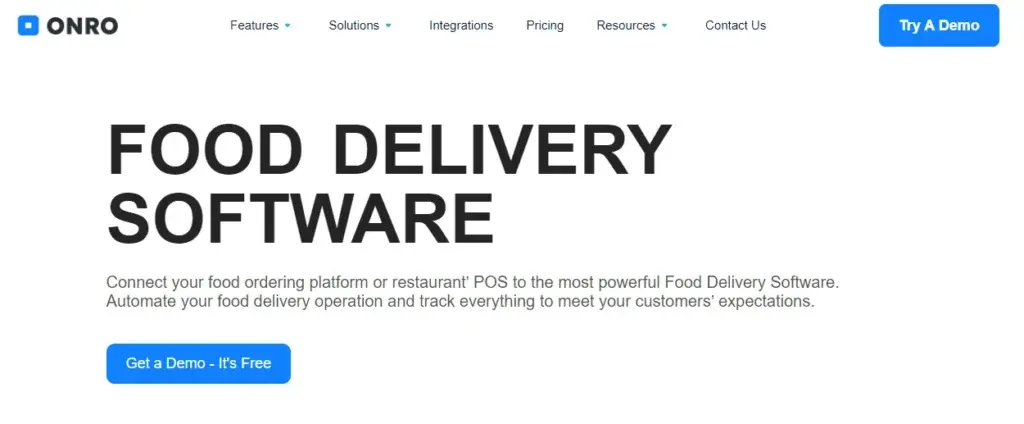
Onro provides robust food delivery software solutions that cater to the unique needs of restaurants and delivery services. With features like order management, driver tracking, and customer notifications, Onro empowers businesses to streamline their delivery processes, enhance service reliability, and maximize customer satisfaction.
Pros:
End-to-End Solution: Manages orders, dispatching, and real-time tracking efficiently.
Customer Engagement: Includes customer feedback and loyalty program management.
Flexibility: Supports multiple restaurant locations and different types of delivery services.
Cons:
Integration Challenges: May require additional setup for seamless integration with other systems.
Learning Curve: Initial setup and training may be time-consuming for staff.
DeliverLogic
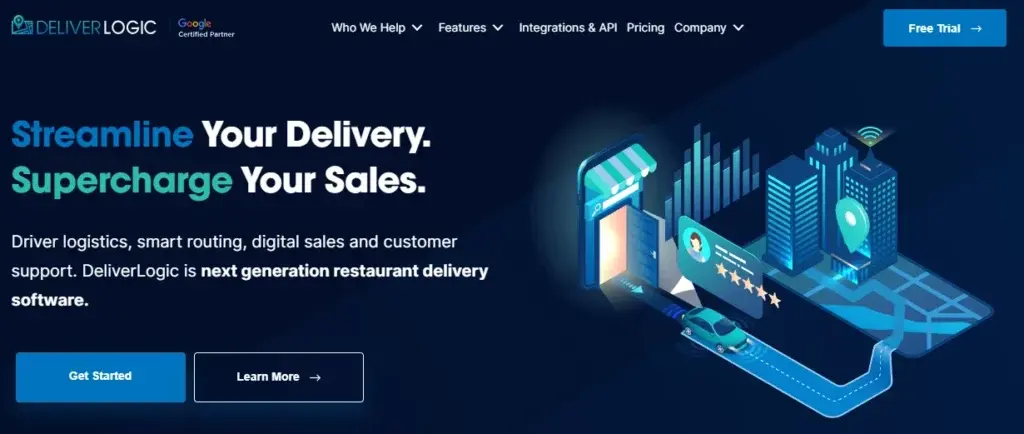
DeliverLogic offers advanced restaurant delivery software to optimize delivery logistics and enhance operational efficiency. Their platform includes customizable features for order management, driver dispatching, and route optimization, enabling restaurants to manage deliveries effectively and seamlessly meet customer expectations.
Pros:
Robust Features: Offers advanced features like route optimization and inventory management.
Customizable Solutions: Tailored solutions for specific restaurant needs.
Reliability: Known for stable performance and uptime.
Cons:
Cost: Higher cost compared to basic solutions.
Setup Complexity: Initial setup and configuration can be complex for non-technical users.
GloriaFood
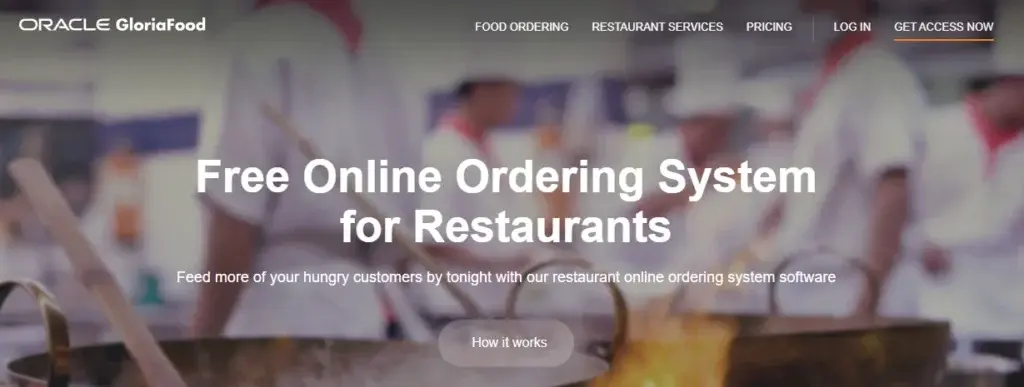
GloriaFood delivers powerful restaurant delivery software designed to simplify order management and enhance delivery operations for food establishments. With comprehensive tools for order tracking, dispatch management, and customer communication, GloriaFood supports restaurants in expanding their delivery services while maintaining exceptional service standards.
Pros:
Free Solution: Offers a free plan with basic features, suitable for small to medium-sized restaurants.
Ease of Use: Simple setup and user-friendly interface.
Scalability: Options to upgrade for additional features and support as the business grows.
Cons:
Limited Features: Free plan lacks some advanced functionalities available in paid versions.
Customer Support: Some users report delays in customer support responses.
Maximize Delivery Efficiency with Innovative Route Optimization
Optimizing delivery routes is more than plotting points on a map; advanced restaurant delivery management software proactively alters routes in real time, accounting for traffic, weather, and unforeseen delays. This precision ensures that meals reach customers at peak freshness and temperature, which is crucial to culinary enjoyment and customer satisfaction.
By employing intelligent mapping and route optimization features, businesses witness a significant decrease in mileage driven and overall delivery times. This streamlined approach allows for more deliveries per shift, directly bolstering revenue streams and improving operational cost efficiency.
Drivers also benefit from optimized routing. They experience reduced stress from navigating less congested routes and the elimination of guesswork in finding delivery locations. Their schedules become more predictable, and the consistency in delivery times often translates into higher customer satisfaction rates.
When customers receive their orders swiftly, the establishment’s reputation is elevated, cementing loyalty and prompting positive reviews. Prompt deliveries can also lead to a higher volume of repeated orders, as convenience and reliability are critical factors influencing consumer choices in the food delivery marketplace.
Streamline Your Online Ordering: Seamless Integration and Simplified Process
Restaurant delivery management software provides a conduit for harmonious integration with current restaurant software systems. This integration ensures the consolidation of various processes into a unified system, such as taking orders, billing, and customer relationship management. By doing so, operational efficiency and order accuracy are notably improved.
This software transforms the customer ordering experience. Thanks to intuitive user interfaces and streamlined transaction processes, customers can easily select, customize, and place orders. The simplicity of these systems reduces ordering time and errors, fostering a more satisfying customer journey from menu browsing to order placement.
Real-Time Order Tracking: A Glimpse into the Kitchen
The advent of real-time order tracking embeds transparency into the delivery process. From the moment an order is placed to the time it arrives at their doorstep, customers can trace the progression of their meals. This capability links customers closer to the dining experience, as they can nearly visualize their food being prepared, packaged, and dispatched.
- Integration with current systems merges data, enhancing coordination between kitchen staff and delivery teams.
- Simplified order processes minimize customer friction, enabling a focus on the pleasure of the meal to come.
- Real-time tracking satisfies curiosity, helps manage expectations, and reduces customer anxiety about wait times.
Centralized Menu Management Across Locations
With restaurant delivery management software, menus across different locations are updated with the click of a button. This instantaneity is a cornerstone of service agility, allowing for quick reactions to market demands, seasonal ingredients availability, or special promotions. By unifying menu updates into a single action, restaurants save time and reduce the risk of errors that can come from manual updates.
The Role of Management Software in Updating Menus Instantaneously
Management software serves as a conduit for change, transmitting new menu items, price changes, and special offer details to every location simultaneously. This technology eliminates the delay associated with the traditional updating of physical menus or individually managed online platforms. Restaurants reap the benefits of immediate customer communication, securing a competitive edge.
Ensuring Brand Consistency in Food Offerings
Consistency lies at the heart of a brand’s credibility and customer’s trust. Centralized control facilitated by delivery management software ensures uniformity in menu offerings. This includes exact descriptions, pricing, and imagery, maintaining a consistent brand experience regardless of location. Diners expect the same quality and selection wherever they go; this technology ensures they are satisfied.
Highlight the Ease of Managing Multiple Locations
With the right software, navigating the complexities of multi-location management becomes more manageable. Adjusting menus for multiple sites typically involves a labyrinth of communications and updates, but a centralized platform simplifies the process. Operators can implement changes across all venues, whether tweaking a single dish or overhauling an entire menu. As a result, this technology has become indispensable for establishments looking to grow their footprint without sacrificing control or quality.
Analyzing Sales and Delivery Data for Better Decision-Making
Restaurants are embracing technology to dissect sales and delivery data and uncover patterns that can streamline operations and increase profitability. Rather than guesswork, data-fueled insights provide the precision needed to sharpen business strategies. Owners and managers tap into a goldmine of analytics, translating numbers into actionable plans.
Sales data provides insight into customer preferences and purchasing habits, shaping menu offerings and influencing promotional tactics. Similarly, analyzing delivery performance statistics leads to a more efficient logistics strategy. Owners and managers can now confidently make informed decisions, crafting experiences tailored to customer demands and optimizing operations for peak performance.
Predictive analytics take data-driven decision-making further, offering forecasts on customer demand. Restaurants can adjust inventory, staffing, and promotions based on anticipated sales surges and dips. Calculating potential outcomes with high accuracy prevents overstocking or understaffing, ensuring capital is utilized efficiently.
- Data analytics informs menu adjustments based on customer trends and seasonality.
- Analysis of order patterns optimizes inventory control, reducing waste.
- Performance metrics from delivery data shape effective distribution networks.
- Demand forecasting through predictive analytics prepares restaurants for future trends.
Sales and delivery data analysis describes the current landscape and illuminates the path forward. Owners and managers who leverage this information reap benefits, watching as their establishment’s efficiency climbs and profits surge. With each dataset comes the opportunity for growth and refinement, heralding a new epoch of data-driven excellence in the restaurant industry.
Maintaining Brand Consistency in Multi-Location Franchises
A unified customer experience echoes the brand’s promise, reinforcing trust and loyalty with every interaction. Within multi-location franchises, achieving a seamless brand experience demands a keen focus on uniform standards. Delivery management software emerges as a pivotal tool in upholding these standards. By centralizing control, franchises can ensure that each location reflects the brand’s core identity and service quality.
Syncing Customer Experience through Technology
Delivery management software acts as a catalyst for uniformity, encompassing various aspects of the operation, from online ordering interfaces to delivery execution. Customers receive consistent messaging, packaging, and product quality irrespective of the location they order from. The software facilitates real-time updates to menus, promotions, and pricing, eliminating discrepancies that could deliberate the brand’s reputation.
Brand Standards Across All Touchpoints
Using delivery management software, every aspect of the customer’s interaction, from browsing the menu to when a meal reaches their doorstep, can be standardized. The brand ethos is maintained through set protocols in order processing, customer service, and the final handoff of orders. The software’s functionality allows monitoring and managing these protocols, ensuring uniformity across all franchises.
- Comprehensive training modules for staff are easily distributable through the software, guaranteeing consistent customer service.
- Integrated quality control systems within the software track product and service standards adherence.
- Customizable templates for branding materials are provided, ensuring each location uses approved visual and textual branding.
Integrate Third-Party Delivery Services Successfully
Integrating third-party delivery services with in-house operations presents unique challenges and benefits. Restaurants face the complex task of melding external delivery platforms with their procedures to create a streamlined service. Successfully managed, this integration leads to expanded reach, customer satisfaction, and increased revenue.
Challenges of Integration
Restaurants must navigate disparate systems, ensuring orders are fulfilled accurately and timely. Different platforms may have varying reliability and service levels, potentially affecting the consistency that patrons expect. The logistical concerns, from order input to final delivery, mean careful coordination is necessary to meet the demands of this intricate process.
Benefits of a Cohesive Strategy
When third-party services complement a restaurant’s operations, the synergy can more effectively address demand spikes and tap into a wider customer base that prefers specific delivery apps. Data from these platforms can inform menu adjustments and promotional strategies to increase profits.
Solutions for Coordination Between Services
Adopting an API (Application Programming Interface) that bridges the restaurant’s point-of-sale system with third-party platforms can automate order information flow. This facilitates a real-time update scenario, reducing errors and saving valuable staff time. Training employees to manage this integrated ecosystem is crucial – staff should be effortlessly comfortable switching between in-house and third-party systems. Regular audit and review processes ensure that orders and delivery times meet the desired standards. Additionally, consolidating customer engagement channels allows for uniform communication, regardless of the service utilized.
Optimizing the Customer Journey
Patrons’ path from menu browsing to enjoying a meal should be seamless, irrespective of which delivery service they choose. Strong cohesion between a restaurant’s in-house operations and third-party deliveries guarantees this experience, upholding the brand’s reputation and encouraging repeat business.
Restaurants looking to thrive in the delivery space will find integrating third-party services with their in-house operations beneficial and necessary. With meticulous planning and the right technology, these partnerships can become a cornerstone of a successful delivery strategy.
Managing Driver Scheduling and Performance
The efficacy of restaurant delivery operations hinges on the capability to schedule drivers efficiently and monitor their performance diligently. With restaurant delivery management, businesses can access tools designed to precisely organize delivery schedules, enabling them to match delivery demand with driver availability. This level of organization not only streamlines the process but also maximizes the productivity of each work shift.
Driver tracking is a pivotal function of these systems. By leveraging GPS technology, the software offers real-time insights into driver locations and delivery status, thus enhancing the reliability of the delivery service. Customers appreciate knowing their order’s progress, and restaurant managers use this data to ensure timely deliveries.
Pro Tip: Use automated scheduling, GPS tracking, and shift management tools to optimize delivery routes, track real-time statuses, and ensure compliance with labor laws.
Performance Metrics and Feedback Loops for Continuous Improvement
Assessment and refinement of driver performance rest upon clear, measurable metrics. Delivery management software collects data on various indicators such as delivery times, customer feedback, and overall reliability. Managers analyze this data to identify patterns of excellence or areas needing improvement. Additionally, integrating customer ratings and feedback into performance reviews enables a data-driven approach to enhance delivery service quality.
Instituting a feedback loop system promotes a culture of continuous improvement. Drivers receive constructive critiques and commendations based on their performances, fostering an environment where excellence becomes the norm. The software often includes reporting tools managers use to discuss these assessments with their teams, driving a collaborative approach to service enhancement.
Ensuring Compliance with Food Safety and Delivery regulations
Restaurant delivery management software is a formidable ally for businesses in navigating the intricate landscape of food safety and delivery regulations. Establishments harness such systems to remain aligned with the latest compliance standards. In this context, the software’s role extends beyond operational management; it morphs into a guardian of regulatory adherence, thus shielding businesses from potential legal repercussions and reputational harm.
Active monitoring capabilities are pivotal in this technology, providing real-time alerts on regulation shifts for restaurants. Stakeholders receive these notifications through the software’s interface, ensuring they can respond quickly to alterations in food safety laws or delivery guidelines. This facet eliminates the lag between regulatory change and business action, significantly reducing infringement risks.
The benefits of utilizing delivery management software include tracking food temperature during transportation and confirming that delivery personnel meet hygiene standards. Delivering not just food but safety assurance, software platforms integrate checklists and protocols directly into their systems, prompting drivers to perform necessary actions. Consequently, restaurants can maintain a documented pledge to compliance at each stage of the delivery process.
In addition to promoting adherence, the software aids in establishing a culture of compliance within the workforce. By incorporating training modules and best practices into the user interface, employees stay informed and equipped to handle food and deliveries according to stipulated regulations. Technology here does not only serve to inform but also to ingrain regulatory compliance into the operational ethos of restaurant businesses.
Revolutionize Your Delivery Service with Contactless Solutions
With a shift in consumer behavior favoring safety and convenience, restaurants now expedite the adoption of contactless delivery and payment methods. These systems enhance customer trust and streamline the transaction and delivery process. Restaurant delivery management software with contactless capabilities becomes a vessel for this transformation, offering a touch-free experience from order placement to completion.
Contactless Delivery: A Response to Customer Expectations
Customers have come to expect a contactless delivery option. By integrating this feature, restaurants showcase a commitment to safety, reassuring patrons that their well-being is paramount. Contactless delivery, facilitated by sophisticated software, ensures that meals reach customers with minimal physical interaction, reducing the risk of contamination.
The Seamless Nature of Contactless Payment Integrations
Contactless payment systems seamlessly integrate with restaurant delivery management platforms, providing a swift and secure transactional experience. This modern payment solution supports various modes, such as credit cards, mobile payments, and digital wallets, enabling a quick and user-friendly checkout process.
- Customers appreciate the speed of transactions.
- Improved order accuracy is another benefit.
- Restaurants observe a reduction in errors.
Advancing Beyond Traditional Payment Methods
Digital advancements open the door to a range of possibilities beyond the swipe of a card. QR codes, NFC technology, and smartphone applications now lay the foundation for payment processing, providing both efficiency and enhanced security. Restaurants adopting these technologies within their delivery management software ensure they remain at the industry’s forefront.
These measures maintain business continuity while adapting to the evolving food delivery landscape. Implementing contactless delivery and payment options signals a restaurant’s agility and understanding of the contemporary market’s demands.
Enhancing Customer Experience through Delivery Tracking Features
Delivery tracking features transform customer experience. Restaurant delivery management platform that equips customers with real-time order tracking capability significantly boosts satisfaction, fostering loyalty. Customers appreciate transparency; knowing exactly when their food will arrive enhances the overall experience. This convenience positively affects repeat business rates, as customers will likely return to a service that offers certainty and control over their delivery.
Advancements in software technology enable restaurants to provide customers with live updates from the moment the order is prepared to the second it reaches their door. Users receive notifications at each step, creating a connected and engaging service experience. This communication not only diminishes anxiety over order status but also proactively manages expectations, reducing customer service inquiries related to order whereabouts.
Furthermore, integrating delivery tracking within management software can contribute to operational efficiency. Restaurants can leverage data from customer interactions with tracking features to refine delivery processes. Analyzing patterns in delivery times and customer feedback leads to informed decisions that enhance service quality.
- Customers empowered with tracking tools feel a sense of involvement and control.
- Real-time tracking decreases the need for customers to contact the restaurant for updates, freeing staff to focus on providing quality service.
- Repeated positive experiences with delivery tracking encourage customer retention and long-term brand loyalty.
Leveraging AI and Machine Learning for Demand Forecasting
With artificial intelligence (AI) and machine learning advancements, restaurant delivery management software can now transform vast data into actionable insights. These technologies analyze historical sales, weather patterns, local events, and other relevant factors to anticipate periods of high demand. As a result, restaurants can efficiently allocate resources, ensuring optimum service during peak times while reducing waste during slower periods.
When AI-driven demand forecasting is implemented, restaurants see a tangible benefit in cost savings. By accurately predicting busy times, establishments allocate staff and inventory more effectively, reducing overhead costs and minimizing food waste due to spoilage. Likewise, restaurants can reduce resource use during anticipated downtimes, avoiding unnecessary labor costs.
AI and machine learning provide a competitive edge by aligning resource allocation with demand patterns. This reduces operational costs and positions restaurants better to meet customer expectations through timely and efficient service. Through smart forecasting, the gap between resource expenditure and revenue potential narrows, paving the way for heightened profitability and sustainability in the competitive world of restaurant delivery.
Controlling Costs with Inventory and Waste Management Tools
Streamlining your restaurant’s financials hinges significantly on adept inventory handling and curtailing waste. Robust restaurant delivery management software equips businesses with the capability to track stock levels meticulously, which directly informs purchasing decisions. By doing so, restaurants align their order quantities more precisely with demand, slashing the prevalence of excess ingredients that often end up as waste.
Moreover, integrating waste management tools encourages kitchens to monitor and analyze food usage patterns. Chefs and managers gain insights into which items are frequently wasted and can adjust menu offerings or portion sizes accordingly. This strategic approach resonates beyond the ledger, yielding a more sustainable operation by minimizing the establishment’s carbon footprint through reduced food waste and associated disposal costs.
The decreased spending on unnecessary inventory purchases on the financial frontier cascades into palpable bottom-line savings. Restaurants enjoy a twofold benefit: enhancing their reputation as environmentally conscientious businesses while improving profitability. Embracing these tools is not merely a cost-saving maneuver but a testament to a restaurant’s commitment to sustainability and fiscal responsibility.
- Inventory tracking enables precise order volumes, avoiding surplus stock that can lead to waste.
- Detailed waste analysis pinpoints opportunities for adjustments in menu planning and portion control.
- Financial savings ensue from avoiding over-purchasing and reducing the costs linked to waste disposal.
- Operational sustainability is fostered, enhancing the restaurant’s brand as an environmentally aware entity.
Maximize Repeat Business with Personalized Marketing in Restaurant Delivery
Personalized marketing strategies harness the capabilities of restaurant delivery management software to build lasting customer relationships. By engaging with customers on a one-to-one basis and curating marketing materials to meet their preferences, restaurants can seamlessly encourage repeat business. Utilizing customer data, such as past orders and preferred menus, enables the delivery of tailored promotions directly to the consumer.
The way personalized marketing translates into repeat business is straightforward. Customers who receive offers that resonate with their tastes are likelier to place another order. This tailored approach demonstrates a restaurant’s commitment to providing a unique and satisfying experience, fostering a sense of loyalty among its clients.
Unlocking the Potential of Targeted Marketing Features
- Software tools analyze customer behavior, directing marketing efforts more effectively.
- Email campaigns can spotlight new menu items or special discounts aligned with customer preferences.
- Social media integrations within the delivery management system facilitate shareable, customer-relevant content.
Personalized marketing initiatives are not limited to emails or social media content but extend to the entire customer journey. By following up on a delivery with a personalized thank you message or offering a discount on a customer’s birthday, restaurants show appreciation and remember attentiveness.
Detailed customer profiles, including information on dietary restrictions or favorite cuisine, empower marketing campaigns that speak directly to customers’ desires. Each interaction is an opportunity to demonstrate value and deepen customer relationships.
A return on investment is clear when restaurant delivery management software is in play. By driving repeated engagement through personalized marketing and promotions, restaurants see a significant increase in customer loyalty and, by extension, profitability.
Fortifying Data Security in Restaurant Delivery Management Software
Restaurant delivery management software processes vast amounts of sensitive customer information, including payment details, addresses, and personal preferences. To safeguard this critical data, software platforms must incorporate advanced cybersecurity measures. Without robust security components, restaurants expose themselves to significant risks such as data breaches, fraud, and identity theft.
Comprehensive Cybersecurity: A Non-negotiable Feature
Fully integrated security protocols within the delivery management software shield the business and preserve customer trust. Encryption of data both in transit and at rest ensures that information remains inaccessible to unauthorized parties. Firewalls and anti-malware tools protect against external threats, while secure authentication mechanisms prevent unauthorized access.
Regular security audits and compliance with PCI DSS (Payment Card Industry Data Security Standard) standards are essential for maintaining a sound security posture. A breach can have far-reaching implications, including legal consequences and damage to reputation. Therefore, continuous monitoring and updating of security measures align with best practices in data protection.
Incorporating multi-factor authentication adds a layer of verification that significantly reduces the likelihood of unauthorized account access. Data loss prevention tools and regular backups also prepare businesses for rapid recovery in the event of an incident. Visibility and control over who has access to sensitive data allow for quick action if internal security is compromised.
- Encryption prevents data interception and ensures confidentiality.
- Firewalls and anti-malware tools are the first line of defense against cyber threats.
- Security audits and compliance with data protection standards are mandatory for risk management.
- Multi-factor authentication minimizes unauthorized account access.
- Data loss prevention and backups equip businesses for efficient incident recovery.
- Managing user permissions guarantees that only authorized personnel handle sensitive data.
By integrating these robust security features, restaurant delivery management software fulfills its role in operations and protects the business’s lifeblood: its data.
Exploring Sustainability Practices in Packaging and Delivery Operations
Adopting environmentally conscious packaging and delivery practices is an operational and ethical beacon for restaurants. By utilizing restaurant delivery management software, businesses can seamlessly incorporate sustainable materials tracking, route optimization for fuel efficiency, and strategic delivery scheduling to reduce carbon emissions. These features reflect a commitment to the planet and enhance the establishment’s appeal to eco-aware customers.
Features That Support Sustainable Practices
Advanced software systems enable restaurants to choose packaging options made from biodegradable or recycled materials, which can be systematically tracked within their delivery operations. Moreover, route optimization algorithms are available to minimize the distance traveled, effectively reducing fuel consumption and greenhouse gas emissions. In addition, delivery management platforms offer analytics for monitoring and managing energy usage within logistics, contributing to a more sustainable business model.
Sustainability as a Driver for Customer Retention and Brand Image
Customers increasingly favor dining experiences aligned with their values, where sustainability is a growing concern. Thus, by integrating sustainable initiatives through restaurant delivery management software, restaurants not only adhere to environmental standards but also bolster customer loyalty and enhance their brand image. Such dedication to sustainability can differentiate a business in a competitive market, turning environmental responsibility into a tangible asset.
- Tracking systems within the software ensure sustainable packaging materials are documented and optimized.
- An analysis of delivery patterns allows for the consolidation of orders. It reduces the number of trips made, thereby lessening the establishment’s overall carbon footprint.
- Through customized reporting, restaurants gain insights that inform further improvements in sustainable practices within their supply chain.
Key Takeaways
- Restaurant delivery management software significantly improves delivery efficiency by using real-time route optimization. This reduces mileage and delivery times, allows more deliveries per shift, and enhances driver satisfaction.
- The software integrates with existing restaurant systems, consolidating order processing, billing, and customer management. This enhances operational efficiency and improves order accuracy, providing a streamlined customer experience.
- Real-time order tracking features increase transparency, allowing customers to follow their orders from preparation to delivery. This improves customer satisfaction by managing expectations and reducing anxiety over wait times.
- By analyzing sales and delivery data, restaurants can make informed decisions that optimize operations, improve menu offerings, and enhance overall performance. Predictive analytics also help forecast demand and adjust inventory and staff accordingly.
- The software facilitates adopting sustainable practices in packaging and delivery operations, reducing carbon emissions and appealing to eco-conscious customers. This commitment to sustainability can differentiate a business and foster customer loyalty.
Conclusion: Unlock Your Franchise’s Full Potential with Delivery Management Software
Restaurant delivery management software equips franchise owners with the tools to revolutionize their delivery services. Franchises that leverage such software see a transformation in efficiency, customer satisfaction, and profitability. By harnessing the features detailed throughout this guide — from optimizing delivery routes to integrating third-party services — business operations become streamlined, and the customer experience is elevated to new heights.
With the integration of artificial intelligence for demand forecasting, inventory and waste management tools, and secure payment options, these systems ensure a seamless operational workflow and safeguard the foundation for a sustainable future in the restaurant business. Personalized marketing and promotions foster a unique bond with consumers, ensuring a robust return on investment through heightened customer loyalty.
Software designed for restaurant delivery management is an indisputable game-changer. By adopting or upgrading to such multi-faceted systems, franchise owners position their businesses at the forefront of the competitive market.
Ready to revolutionize your franchise with cutting-edge innovation? Embrace the future of restaurant delivery management today.
Contact us now to explore the transformative power of NetworkON‘s delivery management software.
Schedule a demo and dive into a world of optimized delivery solutions designed to propel your business forward.
Frequently Asked Questions (FAQs)
How does restaurant delivery management software improve delivery efficiency?
Restaurant delivery management software enhances efficiency through advanced route optimization, which adjusts real-time routes based on traffic, weather, and other variables. This reduces delivery times and mileage, allowing for more deliveries per shift. It also reduces driver stress by providing clear, optimized routes.
How can this software help integrate online orders and manage multiple locations?
The software integrates with existing restaurant systems, consolidating order intake, billing, and customer relationship management into one unified platform. For multi-location management provides centralized control for updating menus, prices, and promotions, ensuring consistency and reducing manual errors across all locations.
How does real-time order tracking benefit customers and restaurant operations?
Real-time order tracking keeps customers informed about their order status from preparation to delivery, enhancing transparency and reducing anxiety about wait times. This feature also improves customer satisfaction and reduces the volume of inquiries related to order status. For restaurants, it provides data to refine delivery processes and improve operational efficiency.
In what ways does the software support sustainable practices?
Restaurant delivery management software supports sustainability by enabling the use of biodegradable or recycled packaging materials, optimizing delivery routes to reduce fuel consumption, and providing analytics to monitor and manage energy usage within logistics. These practices help reduce the restaurant’s carbon footprint and appeal to eco-conscious customers, enhancing the brand’s reputation.
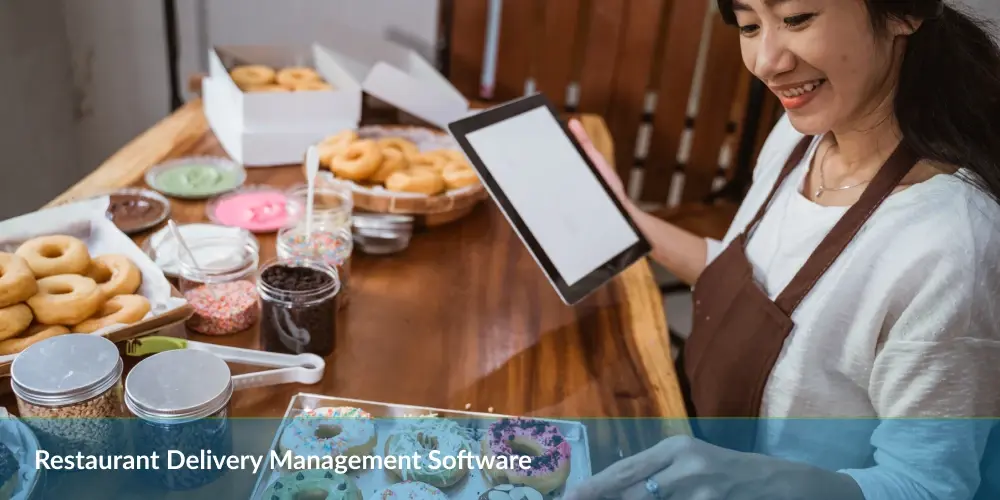




0 Conversations